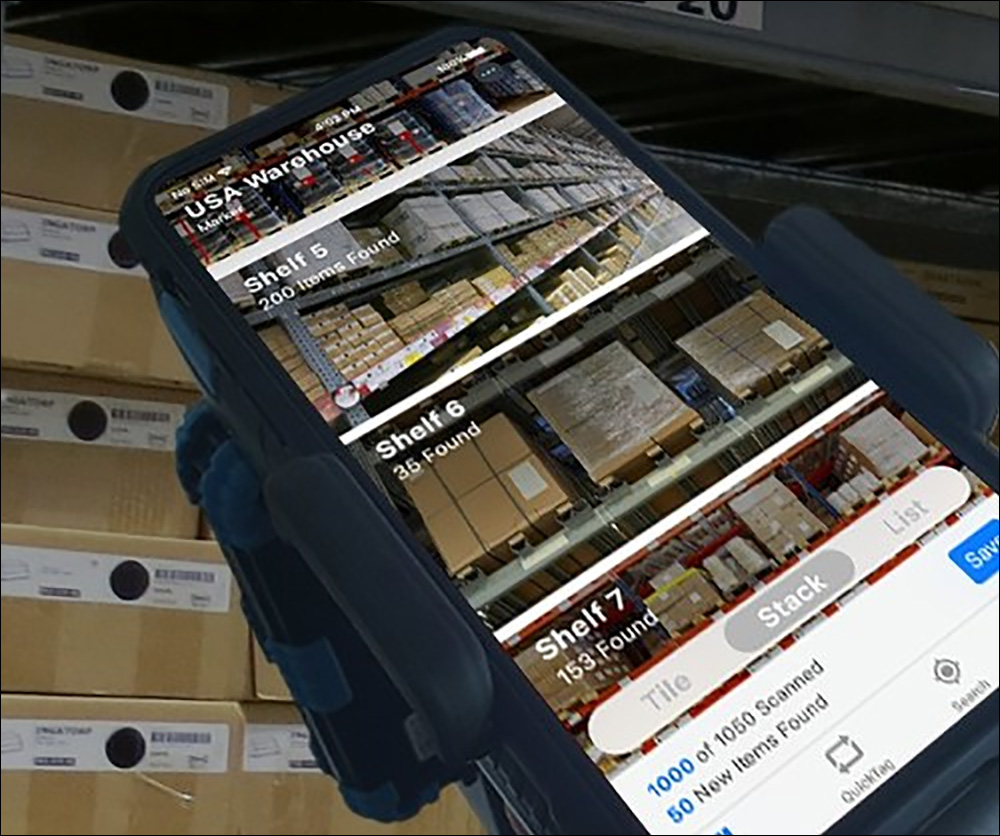Companies using RFID tags on assets or inventory often benefit from integration with business and accounting tools that manage purchasing orders, sales and inventory. That type of integration can be costly in some cases, however, and can require the efforts of IT specialists. Therefore, SimplyRFID is developing a series of features in its Wave inventory-management system software so businesses that would benefit from RFID but lack their own IT department to manage and integrate data can benefit as well.
This, says Carl Brown, SimplyRFID’s CEO, represents a democratization of RFID data. The first integration the company is offering is with accounting software QuickBooks. The RFID company’s solution now enables users of SimplyRFID technology to easily access QuickBooks’ inventory data. By integrating with QuickBooks, Brown says, businesses can enhance and streamline their inventory-management processes.

By integrating with QuickBooks, businesses can enhance and streamline their inventory-management processes.
QuickBooks is an Intuit accounting software package used by small and medium-sized businesses, ranging from online retailers to offices and financial institutions, and it can be operated on the premises or as a cloud-based service. At present, there are more than 3.2 million users of QuickBooks. The software package includes inventory-management capability so businesses can view on the dashboard what they have onsite. Companies using the solution can accomplish basic sales, such as selling shirts, and create a product field that lists inventory available on-hand. Without SimplyRFID’s technology, Brown says, QuickBooks users can input the details manually, though that method does not provide the automated inventory data that can be captured via RFID.
For SimplyRFID, Brown explains, the goal is to make the inclusion of UHF RFID tag read data in such an accounting system relatively easy and affordable. “It’s really basic,” he states. “RFID doesn’t have to be expensive.” In fact, he notes, the evolution of inventory counting can be summarized in three phases. Step one involves a manual method of writing down the identity of every asset or piece of inventory, while step two includes using barcodes, which can be applied to products and then be scanned more easily.
RFID comes in step three, Brown says, and RFID solutions generate data that users need to find a way to interpret. “The biggest question we get every day is, ‘Does it work with CSV [a data exchange format] or with [Microsoft] Excel spreadsheets?’ The next question is, ‘Does it work with my accounting system?'” Thus, SimplyRFID has teamed up with QuickBooks and has more solutions in the works, such as building documents and instructions for Shopify.

SimplyRFID’s Wave inventory-management system
Those looking to integrate RFID with QuickBooks would inform SimplyRFID, whose Pogi inventory-management server can be updated to provide a subject listing of matching product names between the Pogi and QuickBooks lists. Users looking to export data from Pogi to QuickBooks would navigate to the “Select Reports” option, then select “QuickBooks in Pogi.” From there, they could begin exporting their RFID-based inventory data. If they wanted to import in QuickBooks, they could navigate to “Select Settings” and choose “Import.” Once there, they could select “Products and Services” and click on the Pogi Inventory file.
SimplyRFID is using the solution at its own site to track the RFID products it provides to its customers, including tags and cables, as they are received and shipped. The tags can then be read via handheld readers as goods are moved into storage, or as they are shipped to customers. The system prevents out-of-stocks, Brown says, and it can identify loss of inventory, as well as ensure that the company does not over-stock product due to having inaccurate inventory data.

Carl Brown
Smaller businesses with a flow of products coming into and out of their facilities are less commonly using RFID these days, Brown says, but they could benefit from the data the technology would provide. They may have a few thousand items and previously felt that deploying an RFID system was too costly. Once in place, however, an RFID solution provides value, he says, even when used for small volumes of items.
Jewelry retail is one example—the products being sold are high in value, and inventory accuracy is paramount for stores, which typically means goods are manually counted twice daily. The initial effort of tagging goods with RFID is one of the front-end challenges such companies face. But once the system has been deployed, SimplyRFID predicts the technology will quickly pay for itself. “What this allows them to do,” Brown states, “is to have a system that updates every day to confirm the inventory is 100 percent.”
The trend toward simple, affordable software has led smaller companies to adopt Square- and iPad-type systems, and that is the audience SimplyRFID is targeting. “It really gives an individual with one or two stores the ability to adopt RFID,” Brown states. They may deploy one version of QuickBooks to manage several stores, he says, while integration with SimplyRFID’s data “gives them a way of updating and simply knowing ‘Is my stuff there?'” The feature has been available since early summer, and the system can currently be integrated with Shopify, with more such connections in the works. The Wave product line comes as a box solution priced at $2,000.


